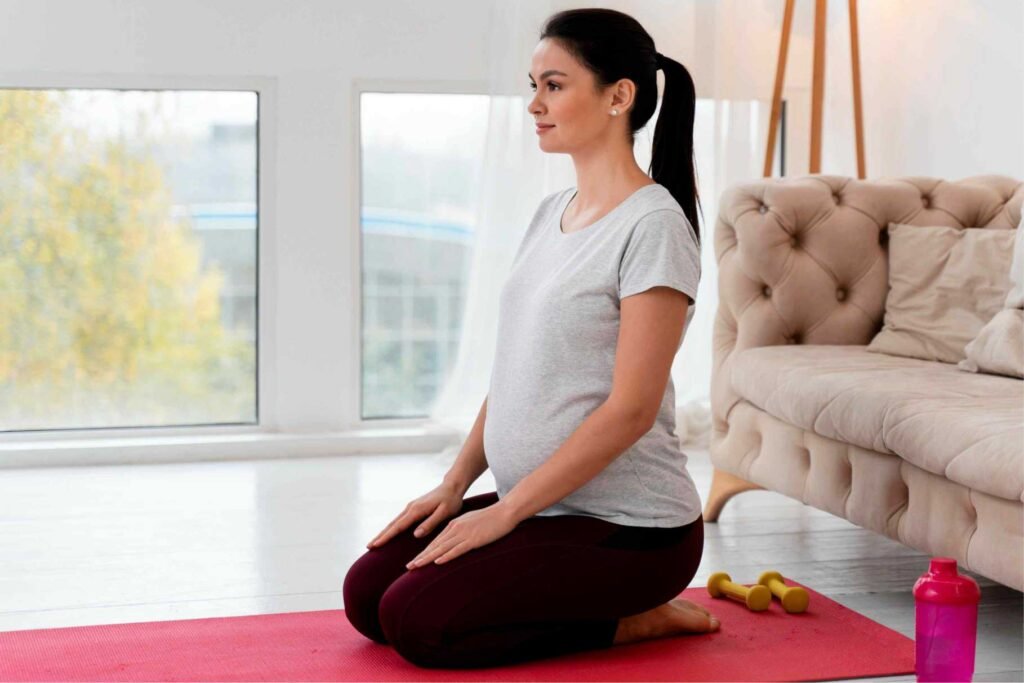Pregnancy Exercises for a Healthy Birth
Exercise is a cornerstone of a healthy lifestyle, and its benefits extend well into pregnancy, significantly impacting the health of both the mother and the baby. While pregnancy can bring about numerous physical and emotional changes, incorporating regular physical activity can help manage these changes effectively. Understanding the importance of pregnancy exercises can lead to a healthier and smoother labor, as well as a quicker postpartum recovery.
During pregnancy, the body undergoes significant transformations to support the growing baby. These changes can sometimes result in discomfort, fatigue, and even complications if not managed well. Exercise helps mitigate these challenges by enhancing physical strength, improving cardiovascular health, and maintaining mental well-being. Moreover, staying active during pregnancy can help control weight gain, reduce the risk of gestational diabetes, and alleviate common pregnancy-related symptoms like back pain and constipation.
Furthermore, the benefits of exercise during pregnancy are not just limited to physical health. Regular physical activity can boost mood, increase energy levels, and improve sleep quality, contributing to overall well-being. For many expectant mothers, exercise becomes a vital tool in managing stress and anxiety, providing a sense of control and empowerment during a time of significant change. As we delve deeper into this topic, we will explore specific exercises that are safe and beneficial during pregnancy, and how they contribute to a healthier birth outcome.

Importance of Exercise for a Healthy Birth
Maintaining an exercise routine during pregnancy is crucial for a healthy birth. The following points highlight why exercise is essential during this period:
- Improves Cardiovascular Health: Regular exercise strengthens the heart and improves blood circulation, which is beneficial for both the mother and the baby. Enhanced cardiovascular health ensures that the baby receives adequate oxygen and nutrients through the placenta.
- Manages Weight Gain: Pregnancy often leads to weight gain, which can sometimes exceed healthy limits. Exercise helps in maintaining a healthy weight, preventing excessive weight gain that can lead to complications such as gestational diabetes and preeclampsia.
- Reduces Risk of Gestational Diabetes: Exercise helps regulate blood sugar levels, reducing the risk of developing gestational diabetes, a condition that can cause complications during pregnancy and delivery.
- Eases Common Pregnancy Discomforts: Many pregnant women experience back pain, constipation, and swelling. Exercise helps alleviate these symptoms by improving posture, enhancing digestion, and reducing fluid retention.
- Boosts Mood and Energy Levels: Physical activity releases endorphins, which can help combat pregnancy-related fatigue and mood swings. This boost in energy and mood can make pregnancy a more enjoyable experience.
- Enhances Sleep Quality: Regular physical activity can lead to better sleep patterns, helping pregnant women get the rest they need despite the discomforts that often come with pregnancy.
- Prepares the Body for Labor: Exercise strengthens the muscles used during labor and delivery, potentially leading to a shorter and less complicated labor. Stronger muscles and better endurance can make the birthing process more manageable.
- Reduces Stress and Anxiety: Pregnancy can be a stressful time, and exercise provides an effective way to manage stress and anxiety. Physical activity promotes relaxation and mental well-being, contributing to a healthier pregnancy.
- Promotes Faster Postpartum Recovery: Women who exercise during pregnancy often experience quicker postpartum recovery. Maintaining fitness levels can help new mothers regain their pre-pregnancy strength and shape more rapidly.
- Supports Baby’s Health: Babies born to mothers who exercise during pregnancy are often healthier, with a lower risk of being overweight and a higher likelihood of having a healthy birth weight. Exercise contributes to better overall fetal health and development.

Pregnancy Exercises for a Healthy Birth
Walking
Walking is a simple yet highly effective exercise that can be done throughout pregnancy. It helps maintain cardiovascular health without putting undue strain on the joints.
Swimming
Swimming is an excellent low-impact exercise that works the entire body. It helps improve cardiovascular fitness, muscle tone, and reduces swelling in the legs and ankles.
Prenatal Yoga
Prenatal yoga focuses on stretching, mental centering, and breathing. It helps improve flexibility, reduce stress, and prepare the body for labor with specific poses that strengthen pelvic muscles.

Pelvic Tilts
Pelvic tilts help strengthen the abdominal muscles and reduce lower back pain. This exercise can be performed on all fours or standing against a wall, making it versatile and easy to incorporate into a daily routine.
Kegels
Kegel exercises strengthen the pelvic floor muscles, which support the uterus, bladder, and bowels. Strong pelvic floor muscles are essential for labor and can help prevent incontinence.
Stationary Cycling
Cycling on a stationary bike is a safe way to improve cardiovascular health without the risk of falling. It helps maintain fitness levels and is an excellent option for those who enjoyed cycling before pregnancy.
Light Weight Training
Using light weights helps build muscle strength and endurance. It is important to avoid heavy lifting and to focus on controlled movements to prevent injury.

Squats
Squats strengthen the lower body, particularly the thighs, hips, and buttocks. They also help prepare the body for labor by improving hip flexibility and pelvic floor strength.
Side-Lying Leg Lifts
This exercise strengthens the inner and outer thighs, contributing to overall lower body strength and stability. It can be done with or without weights and is particularly beneficial during the later stages of pregnancy.
Prenatal Pilates
Pilates focuses on core strength, flexibility, and breathing. Prenatal Pilates classes are designed to accommodate the changing body during pregnancy and help prepare for labor and delivery.

Conclusion
Exercise during pregnancy is a powerful tool for promoting a healthy birth. It offers numerous benefits that extend beyond physical health, encompassing mental well-being and emotional stability. By incorporating regular physical activity into their routine, expectant mothers can manage weight gain, reduce the risk of complications, and prepare their bodies for the challenges of labor and delivery. The ten exercises outlined above provide a variety of safe and effective options to stay active during pregnancy, ensuring a healthier and more enjoyable experience.
Ultimately, the goal of exercising during pregnancy is to enhance the overall well-being of both the mother and the baby. While it is essential to consult with a healthcare provider before starting any exercise regimen, the positive impact of staying active cannot be overstated. A well-rounded exercise routine can lead to a smoother pregnancy, a more straightforward labor, and a faster postpartum recovery. By prioritizing physical activity, expectant mothers can set the foundation for a healthy and happy birth, ensuring the best possible start for their new baby.


